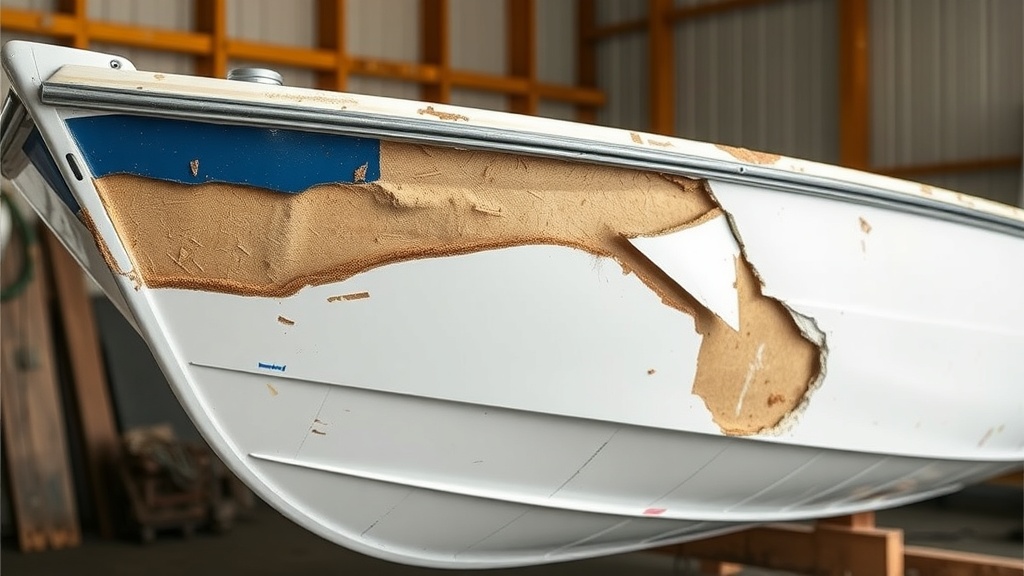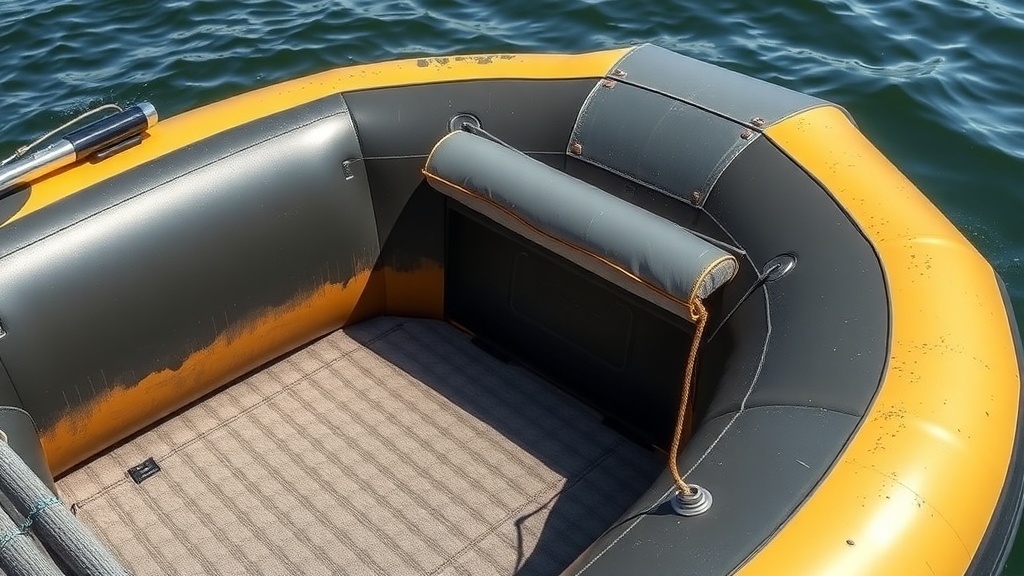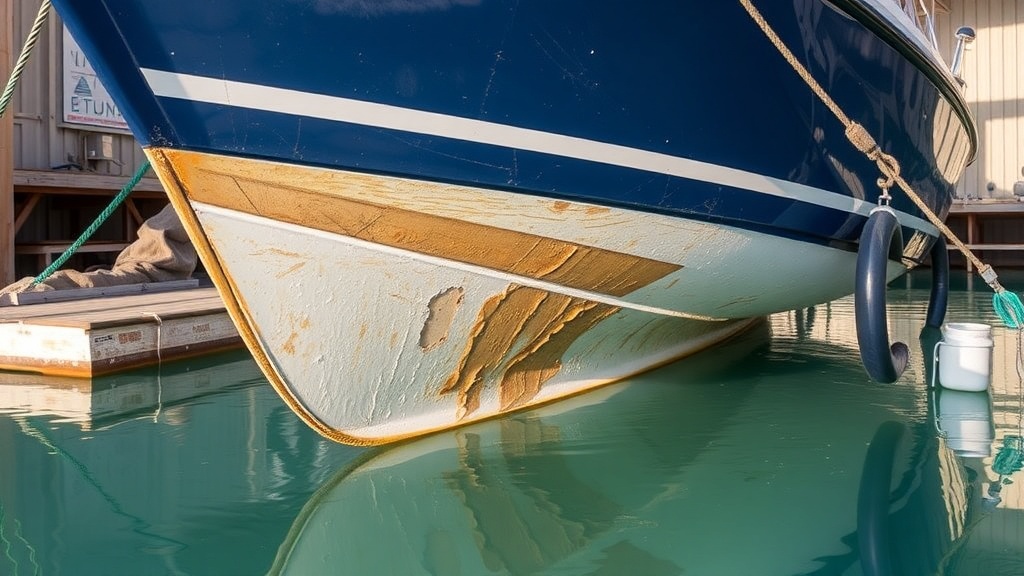Can a Fiberglass Boat Hull Be Repaired? Exploring Techniques and Tips
Fiberglass boat hulls are popular for their durability and lightweight properties. However, like any material, they can sustain damage over time. If you’re asking yourself, “can a fiberglass boat hull be repaired?” the answer is a resounding yes. Understanding the repair techniques can save you money and preserve your investment.
Before diving into the repair methods, it’s essential to identify the type of damage. Fiberglass hulls typically encounter cracks, chips, or larger holes. Let’s explore the options available for each situation.
Understanding the Types of Damage
Take a closer look at the common types of damage you may encounter:
- Surface Cracks: These are often superficial and may not penetrate the hull’s core.
- Gouges or Chips: These create an indentation or missing piece of fiberglass.
- Large Holes: This is more severe and requires a thorough repair process.
Repair Techniques for Fiberglass Hulls
Once you’ve identified the kind of damage, you can choose the right method to repair your fiberglass boat hull.
1. Preparing the Area
Before you begin any repair, preparation is key. Ensure the area is dry and clean. You can wash it with soap and water and let it dry completely, or you can use a solvent like acetone to remove grease and contaminants.
2. Repairing Surface Cracks
For small cracks, use a fiberglass repair kit, which usually contains resin and hardener. Following these steps will help:
- Sand the crack edges with fine-grit sandpaper.
- Mix the resin and hardener as per the kit instructions.
- Apply the mixture over the crack, smoothing it out.
- Allow it to cure according to the time specified in the kit instructions.
- Sand the repaired area to make it flush with the surrounding hull.
3. Fixing Gouges and Chips
For gouges, the process involves filling the void. Here’s how to do it:
- Sand the area around the gouge to ensure a good bond.
- Fill the gouge with fiberglass filler or putty and smooth it out.
- Once cured, sand it down until level with the hull.
- Apply gel coat to match the rest of the hull.
4. Repairing Large Holes
Large holes require a more intricate approach:
- Cut a patch from a fiberglass sheet that is larger than the hole.
- Sand the edges of the hole and the patch for better adhesion.
- Use resin to attach the patch to the hull, applying it from the inside for strength.
- Once set, apply additional layers of fleece or matting as needed, waiting for each layer to cure.
- Sand down the edges neatly and finish with gel coat.
Tips for a Successful Repair
Follow these handy tips to enhance your repair efforts:
- Work in a Controlled Environment: Temperature and humidity can affect the curing process.
- Read Instructions Carefully: Each repair kit may have specific guidelines you should follow.
- Use Protective Gear: Always wear gloves and a mask when working with resins and solvents.
Repairing a fiberglass boat hull might seem daunting, but with the right techniques and tools, it can be a manageable and rewarding task. Engaging directly with the repair process can not only save you money but also provide a sense of accomplishment. With proper care, your fiberglass boat can continue to be a source of enjoyment and adventure for years to come.
Whether you’re facing surface cracks, gouges, or even substantial holes, you can confidently undertake the restoration of your boat hull. Remember, the key is in preparation, patience, and persistence.
Common Issues in Fiberglass Boat Hulls and How to Prevent Them
Fiberglass boat hulls are popular among boaters because of their durability and lightweight properties. However, like any material, they can encounter various issues over time. Understanding these common problems can help you take preventive measures and ensure the longevity of your boat. Here are some prevalent issues that fiberglass boat hulls face, along with tips for prevention.
Gel Coat Damage
One of the most common issues with fiberglass hulls is gel coat damage. The gel coat serves as a protective barrier and enhances the boat’s appearance. It can crack, fade, or chip due to UV exposure, impact, or harsh cleaning chemicals.
- Prevention: Regularly wash your boat with mild soap and freshwater. Apply a UV protectant or wax specifically designed for gel coats. Store your boat out of direct sunlight whenever possible.
Delamination
Delamination occurs when the layers of fiberglass separate. This issue can be caused by moisture intrusion, poor bonding during manufacturing, or prolonged exposure to heat. If left untreated, delamination can weaken the hull significantly.
- Prevention: Avoid allowing water to sit on the deck or in the hull. Ensure any repairs or maintenance are done properly to maintain the integrity of the layers. Keep an eye out for bubbles or soft spots on the hull.
Moisture Intrusion
Over time, moisture can seep into the hull, leading to swelling and blisters. This can severely compromise the structural integrity and lead to costly repairs.
- Prevention: Check your boat regularly for cracks, particularly around fittings, hatches, and seams. If you find any, repair them promptly to prevent moisture from entering. Use a dehumidifier during long storage periods.
Blistering
Blistering is a common issue that arises from moisture trapped within the layers of the hull, leading to bubbles or blisters in the fiberglass. It’s often caused by osmotic pressure.
- Prevention: Properly maintain the gel coat and keep the hull dry. Regularly inspect for signs of blistering and address them before they worsen. For prolonged storage, consider applying a barrier coat.
Impact Damage
Fiberglass hulls can suffer from impact damage due to hitting submerged objects or rough handling. This may create cracks or fractures that weaken the hull’s structure.
- Prevention: Always be cautious around shallow areas and submerged objects. Install a bow thruster or collision sensors if you frequently navigate tricky waters. Ensure that everyone using the boat knows how to handle it safely.
Environmental Effects
Environmental factors can take a toll on fiberglass structures. Saltwater, algae, and marine growth can all cause wear and tear on your hull.
- Prevention: Rinse your boat thoroughly after sailing in saltwater. Use appropriate anti-fouling paint to minimize marine growth. Periodically scrub the hull while it’s out of the water.
Sun Damage
Excessive sun exposure can cause fading and oxidation of the hull, affecting both aesthetics and performance.
- Prevention: Use a boat cover or tarp when your boat is not in use. Regularly apply a wax coating to help protect against UV rays. Consider docking in shaded areas when feasible.
By being aware of these common issues and taking preventive measures, you can significantly enhance the lifespan and performance of your fiberglass boat. Regular maintenance and timely repairs are essential to keeping your vessel in shipshape condition. Remember, investing time in prevention will save you significant costs and headaches in the long run. Happy boating!
Conclusion
Repairing a fiberglass boat hull is not only possible but can be a rewarding endeavor for boat owners. By understanding the various techniques available, such as patching, using epoxy, or employing heat to reshape damaged areas, you can restore your boat’s integrity and performance. Maintaining a keen eye for common issues like scratches, cracks, and gel coat blisters can help prevent further damage. Regular inspections and proactive maintenance are essential in ensuring your fiberglass hull remains in optimal condition.
Preventative measures, such as avoiding excessive exposure to UV rays and keeping the hull clean, go a long way in prolonging the life of your boat. Using quality products meant for fiberglass repair can make the difference in achieving a lasting fix. By arming yourself with knowledge and practical skills, you can tackle minor to moderate hull repairs confidently.
Emphasizing that every repair situation is unique, it is advisable to assess the extent of damage thoroughly before deciding on a repair method. Sometimes, seeking professional help is the best option, especially for complex issues. Remember, maintaining your fiberglass boat hull not only enhances safety but also preserves the value of your investment. With the right approach and preventative care, you can enjoy countless adventures on the water, assured that your fiberglass hull is both functional and reliable. Your boat’s performance hinges on your commitment to its upkeep, so start taking action today!




